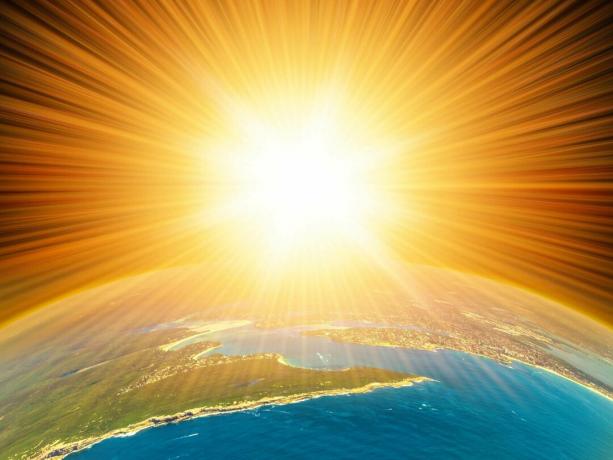Venus is one of Planets of the Solar System. And the second closest to the sun and its main characteristic is the retrograde rotation, that is, it performs the rotation movement in the opposite direction of the other planets.
Despite having dimensions similar to that of Earth, Venus is considered one of the most uninhabitable planets, due to the particularities of its atmosphere and high temperatures, of approximately 467°C.
Venus, a planet visible to the naked eye from Earth, is often mistaken for a star. the known Dalva star, very bright in the sky (including, visible during the day), is, in fact, the planet Venus.
Features of the Planet Venus

Venus has peculiar characteristics. Despite having similar dimensions to Earth and being one of the closest planets, space exploration of the neighbor is extremely difficult due to its conditions.
Venus Rotation
Venus's rotation is contrary to that of all other planets. It's the only one in the solar system that rotates in the opposite system, making the sun rise in the east and set in the west.
O rotation movement of Venus, around its own axis, takes longer than the translation movement (turn around the Sun) lasts 243 days. The translation movement takes about 225 days.
Size and Mass of Venus
The surface of the planet is 460,200,000 km², the diameter is 12,104 km and the mass is 4.8685×1024 kg. In size, Venus is a planet very similar to Earth, but slightly smaller.
Atmosphere and surface of Venus

The atmosphere makes life on the planet virtually impossible. It is quite dense and composed of gases such as carbon dioxide, nitrogen and also sulfuric acid and sulfur.
This combination of gases causes the planet to be constantly under the greenhouse effect, causing extremely high temperatures.
A atmospheric pressure is high, 90 times stronger than that of Earth. A characteristic that makes visits by space robots or probes to the planet very complicated, since most of the equipment cannot withstand the pressure and ends up being destroyed.
The surface of Venus is bumpy, due to meteorite impacts, and also covered in cold lava. The planet is full of volcanoes, which during their time of activity contributed to the atmosphere having as much CO2 and eventually become toxic.
Venus temperature
Venus is the hottest planet in the solar system, its average temperature is around 467°C. Its atmosphere with gases such as carbon dioxide, which retains and increases heat, causes temperatures to be always extreme.
Venus manages to be hotter than Mercury, the planet closest to the Sun, due to these climatic characteristics.
Curiosities about Venus
- It is considered the sister planet of Earth, for having similar size and density;
- Its atmosphere suffers a constant and intense process of greenhouse effect;
- There are rains that contain sulfuric acid, extremely corrosive;
- The Sun rises in the west and sets in the east, due to retrograde rotation;
- A day lasts longer than a year, as the planet takes longer to rotate than it does to move around the Sun;
- Venus has no moons (natural satellites);
- It is not possible to have liquid water on the planet (only water vapour), the high temperature and pressure make it impossible for water to remain in any state other than gaseous.
Learn more about Solar system and the stars.



